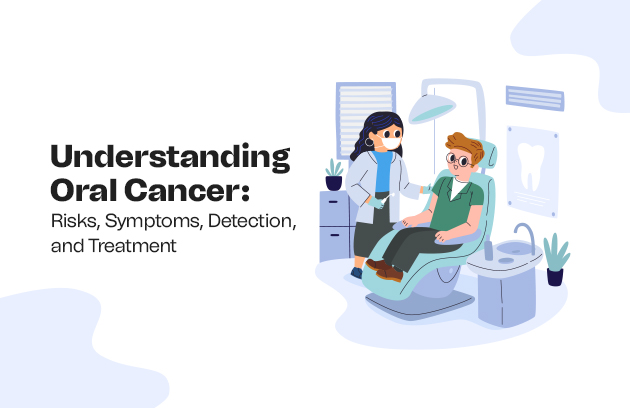- December 12, 2023
- admin
- Comment: 0
- blog, Oral Cancer
Tobacco and its derivatives are widely acknowledged as major contributors to various life-threatening health issues, including respiratory ailments, heart complications, and cancer. Studies unequivocally establish the predominant link between smoking, tobacco chewing, and the heightened risk of oral cancers.
In nations with a substantial number of tobacco consumers, oral cancer accounts for over 30% of cancer cases, ranking among the top three most prevalent forms of cancer. Startling statistics reveal that every passing hour witnesses the loss of five lives to oral cancer in India alone, illustrating the pervasive nature of this disease.
Defining Oral Cancer:
Oral cancer manifests within the mouth and throat tissues, classifying it as part of head and neck cancers. This encompasses cancers affecting the lips, tongue, palate, gums, cheeks, and the mouth’s floor. Notably, the primary risk factor remains the use of tobacco, whether through smoking cigarettes or chewing, with alcohol consumption further exacerbating this risk.
Identifying Symptoms of Mouth Cancer:
The early identification of oral cancer significantly enhances the prospects of successful treatment and potential cures. Detecting initial stages of mouth cancer varies among individuals, often presenting with a range of subtle symptoms.
Some prevalent indicators of oral cancer include:
- Presence of red or white patches on the mouth or lips
- Sores or swelling on the tongue or cheeks
- Discomfort while swallowing or chewing
- Persistent lip and mouth sores that resist healing
- Loosening of teeth
- Noticeable lumps in the cheek or neck region
- Experience of numbness in the face or neck
Vigilant self-examination, especially among smokers and tobacco users, is strongly advised. Consulting a medical professional is imperative if any symptoms persist over time.
Understanding Oral Cancer's Curability:
When detected in its early stages, Oral Cancer is often curable, particularly when the cancerous mass or tumor remains small and localized. Early consultation with a specialist to evaluate any concerning symptoms or signs is crucial.
Detection Methods for Oral Cancer:
Accurate diagnosis forms the bedrock for devising appropriate treatment plans for oral cancer. Detection commences with a meticulous physical examination, scrutinizing the mouth, tongue, and cheeks for any suspicious growths or abnormalities. A biopsy follows if any anomalies are discovered, aimed at confirming the presence of cancerous cells. Additional imaging scans such as X-rays, MRIs, CT scans, PET scans, or endoscopies might be conducted to ascertain the extent of cancer spread.
Staging of Oral Cancer:
Oral cancer is categorized into four distinct stages:
Stage 1: Cancer confined within a tumors size of less than 2 centimeters without spread
Stage 2: Slightly larger tumors (2-4 centimeters) with no spread
Stage 3: Tumors larger than 4 centimeters, possibly affecting nearby lymph nodes
Stage 4: Extensive tumors with spread to adjacent tissues, lymph nodes, or other body parts
Treatment and Survival Rates:
The prognosis for oral cancer hinges significantly on the stage of diagnosis. Survival rates are notably higher when detected in earlier stages. Survival rates exceed 80% for Stage 1 or 2, around 65% for Stage 3, while Stage 4 records survival rates of 30-38%. Timely diagnosis followed by suitable treatments such as surgery, radiation, chemotherapy, or targeted therapy can substantially improve outcomes. Advanced stages might necessitate reconstructive surgeries to compensate for lost tissues or supportive therapies like speech rehabilitation for functional recovery.





